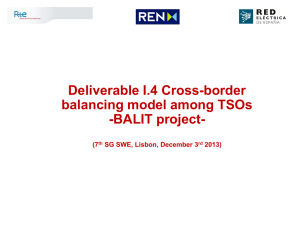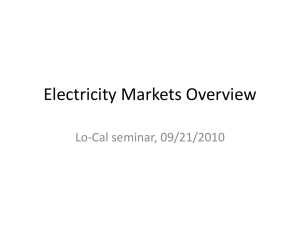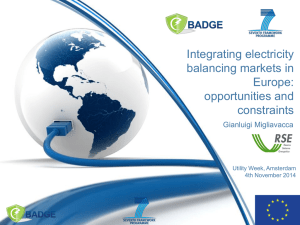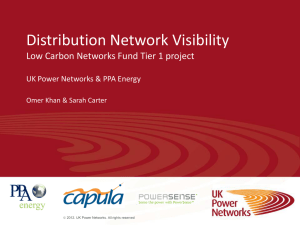Technical Lecture
advertisement
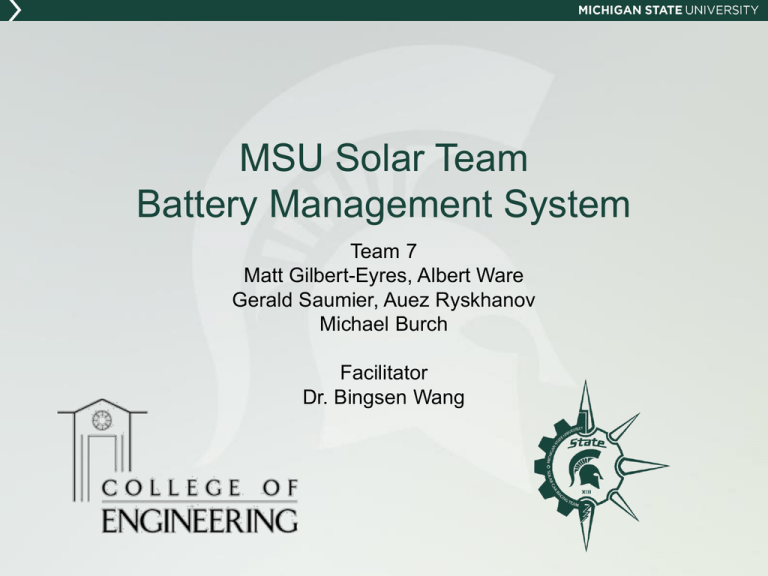
MSU Solar Team Battery Management System Team 7 Matt Gilbert-Eyres, Albert Ware Gerald Saumier, Auez Ryskhanov Michael Burch Facilitator Dr. Bingsen Wang Battery Balancing Batteries can have small differences in capacitance Differences will cause problems when batteries are connected in series Protects the system by balancing the cells to compensate for the differences. Battery Charge and Discharge Voltage increases quickly at the start of charging Voltage decreases quickly at the end of charge life Battery balancing important at theses times Why Battery Balancing? Increases Battery Life With imbalance individual cell voltages will drift apart over time With imbalance capacity of total system decreases Two kinds of Balancing: Passive Fixed Shunt Controlled Shunt Active Boost Converter Switched Capacitor Single Switched Capacitor Double Tiered Capacitor Single-inductor method Multi-inductor method Single-Windings Transformer Multi-Windings Transformer Passive Balancing Fixed Shunting Resistor Continuously bypassing current Resistor Scaling Varies to limit cell voltage Works on Lead-acid and Nickel based Pros: Simplicity Low Cost Robust Cons: Energy Continuously Dissipated Creates Heat Passive Balancing Controlled Shunting Resistor Two Modes Continuous Detecting Controlled by relay/switches Works on Li-Ion Pros: Simplicity Low Cost Reliable Cons: Energy is Dissipated Creates Heat Passive Balancing Overall Shunting Resistor Easy to use and implement Reliable Can shorten battery run time Wastes Energy Active Balancing Boost Converter Cell Balancing Uses boost converter to transfer excess energy from highest cell to lowest cell Requires Voltage sensors Controller Switches Active Balancing Boost Converter Boost input voltage to desired voltage Uses duty to cycle to control output voltage Equation Vo= (1/1-D)*Vin Active Balancing Boost Converter Cell Balancing cont. Lithium Ion batteries charge at 4.2 v Boost converter must output constant 4.2 Active Balancing Capacitive Balancing What is capacitive balancing? It is a method utilizes capacitors as an external storage unit that allows higher charged batteries to transfer energy to lower charged batteries. This cycle of charging and discharging capacitors allows for all the batteries to operate at the same voltage. Active Balancing Switched Capacitor This method shuttles the energy from the high charged batteries to the lower charged batteries, but all batteries are not connected together. Pros: Easier to implement Charges and discharges efficiently Cons: Higher cost than resistor systems Not the quickest system Active Balancing Single Switched Capacitor Similar to the other system but it only uses one capacitor for balancing. Pro: Requires less number of switch compared to the switched capacitor method (batteries >5) Con: Switching logic is more complex Active Balancing Double Tiered Capacitor Same functions as the other systems, but another capacitor is added to improve linkage amongst the batteries. Pros: Balancing time is cut by more than half Charges and discharges efficiently Con: More capacitors required INDUCTOR/TRANSFORMER BALANCING METHODS Single-inductor method Multi-inductor method Single-Windings Transformer Multi-Windings Transformer Active Balancing Single-inductor method Use one inductor Control system senses the voltage Duty cycle 50% High current destroys transistors Active Balancing Multi-inductor method Uses n-1 inductors Control system senses the voltage Applies PWM to transfer the energy Takes long time for transferring the energy Active Balancing Single-Windings Transformer Pack to-cell topology Uses one transformer Transfers whole energy to the week cell Cell-to-pack topology Uses one transformer Transfers energy from the high energy cell Active Balancing Multi-Windings Transformer Uses multi-winding transformer Group of cells can exchange the energy Really hard to make a transformer with big number of windings Source http://www.mdpi.com/1996-1073/6/4/2149

